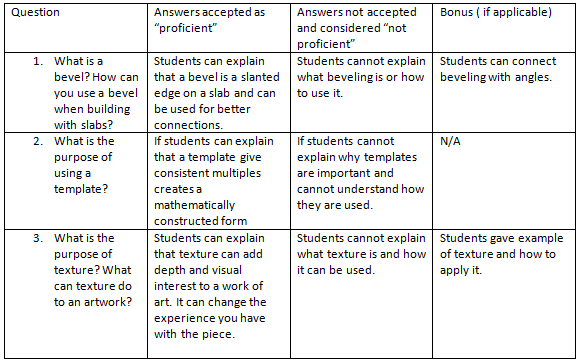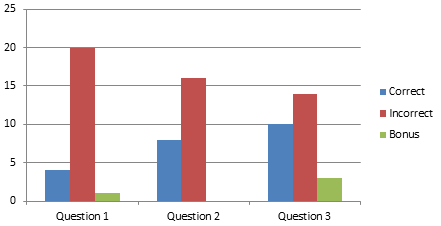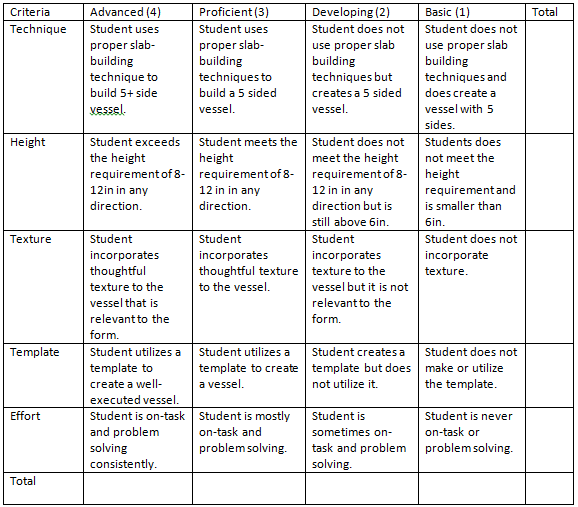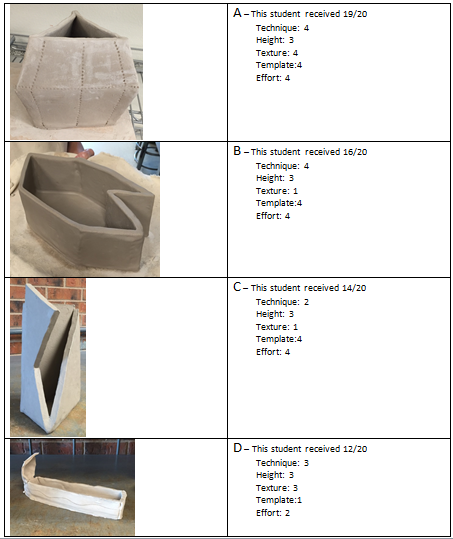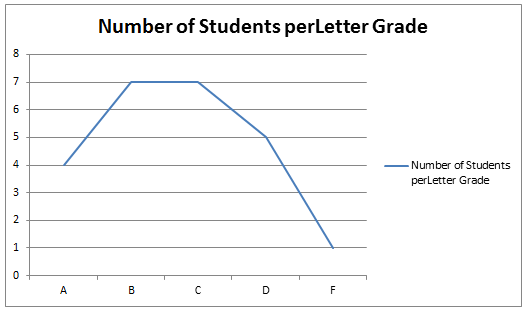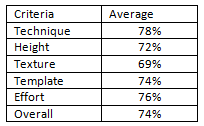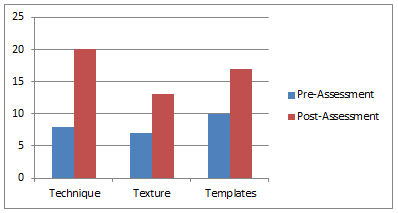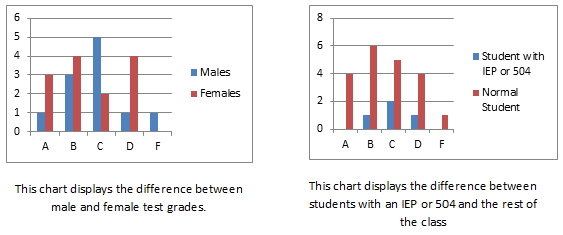Data Analysis:
Pre-assessment is a great tool to figure out what your students already know about the topic that you are about to teach. In art, pre-assessments are difficult because most of the concepts we teach are hands-on which means in order to pre-assess their knowledge we would have to have the students make something. In this case however, I gave the students a short 3 question pre-test that was given as a “ticket-out-the-door.” The concepts that I will be addressing in this lesson include slab building, attachments, vessels, and templates. The questions included on the “ticket-out-the-door” were as follows:
1. What is a bevel? How can you use a bevel when building with slabs?
2. What is the purpose of using a template?
3. What is the purpose of texture? What can texture do to an artwork?
These questions were used to understand where I would need to begin teaching. It would show me if students remembered the basic procedure of slab building and also assessed if they had ever used templates before. Although the pre-assessment was not graded by letters, I organized the answers into “proficient” and “not proficient” by the following criteria. This would help be understand which concepts to emphasize.
1. What is a bevel? How can you use a bevel when building with slabs?
2. What is the purpose of using a template?
3. What is the purpose of texture? What can texture do to an artwork?
These questions were used to understand where I would need to begin teaching. It would show me if students remembered the basic procedure of slab building and also assessed if they had ever used templates before. Although the pre-assessment was not graded by letters, I organized the answers into “proficient” and “not proficient” by the following criteria. This would help be understand which concepts to emphasize.
The results from the pre-assessment are shown below in the chart. A total of 24 students took the pre-test.
This chart above explains how students scored on the pre-test. The left column above each question shows the number of students who were proficient, the middle column shows the number of students that were not proficient, and the right column shows the number of students who answered the bonus correctly. The percentages of correct answers are listed below:
Question 1: 16% proficient 4/24 students
Question 2: 33% proficient 8/24 students
Question 3: 42% proficient 10/24 students
Overall: 30% proficient 7/24 students
After organizing my results from the pre-assessment, I determined what I will need to cover and how to tailor it to my students. I decided that I needed to focus on specifically on the technique of beveling and why it is important when slab building. To do this, I will give a demonstration so that the students can see the technique performed and can also visually see why it is important. This will also allow the students to be interactive with the process and practice for themselves. Another area that I will be focusing on in my lesson is the idea of a template. According to a lot of the answers on the pre-assessment, students knew what a template was but they were unsure of how to use it in pottery. Because of this, I will also do a demonstration on this concept. I will bring in examples as well of templates and the finished product so that they can understand how a flat template can become a 3-D model or piece of art. The last concept that I pre-assessed was the idea of texture. Most students knew what texture was but were unable to explain why this was significant. In order to address this concept, I will explain why texture is important and how it fits with the form you make. I will show a couple examples of how the texture affects the form and how the glaze also affects the texture even though they are not being assessed on the glazed product yet. Through this process, I also learned that some students had a hard time explaining their thoughts on paper. I will accommodate this need by talking through my demonstration and asking questions verbally to the students so that they can better explain their answers and gain assistance from their peers.
Post-assessments can show the growth your students made during your lesson. For my post-assessment, I decided to change the tool I used. After my lesson, students were assigned to create a slab-built vessel with certain requirements. I created a rubric for the students to follow that would assess the students in the categories of technique, height, texture, template and effort. The rubric is shown below.
Question 1: 16% proficient 4/24 students
Question 2: 33% proficient 8/24 students
Question 3: 42% proficient 10/24 students
Overall: 30% proficient 7/24 students
After organizing my results from the pre-assessment, I determined what I will need to cover and how to tailor it to my students. I decided that I needed to focus on specifically on the technique of beveling and why it is important when slab building. To do this, I will give a demonstration so that the students can see the technique performed and can also visually see why it is important. This will also allow the students to be interactive with the process and practice for themselves. Another area that I will be focusing on in my lesson is the idea of a template. According to a lot of the answers on the pre-assessment, students knew what a template was but they were unsure of how to use it in pottery. Because of this, I will also do a demonstration on this concept. I will bring in examples as well of templates and the finished product so that they can understand how a flat template can become a 3-D model or piece of art. The last concept that I pre-assessed was the idea of texture. Most students knew what texture was but were unable to explain why this was significant. In order to address this concept, I will explain why texture is important and how it fits with the form you make. I will show a couple examples of how the texture affects the form and how the glaze also affects the texture even though they are not being assessed on the glazed product yet. Through this process, I also learned that some students had a hard time explaining their thoughts on paper. I will accommodate this need by talking through my demonstration and asking questions verbally to the students so that they can better explain their answers and gain assistance from their peers.
Post-assessments can show the growth your students made during your lesson. For my post-assessment, I decided to change the tool I used. After my lesson, students were assigned to create a slab-built vessel with certain requirements. I created a rubric for the students to follow that would assess the students in the categories of technique, height, texture, template and effort. The rubric is shown below.
Scores were then taken based off the following scale:
A = 20-18, B = 17-16, C = 15-14, D = 13-12, F = 11-0
Below are 5 examples of student work. Each one represents a different grade to understand what each letter grade looks like when translated to the artwork. The only F on this project was a student who decided not to participate in this project and wanted to take the F as his final grade.
A = 20-18, B = 17-16, C = 15-14, D = 13-12, F = 11-0
Below are 5 examples of student work. Each one represents a different grade to understand what each letter grade looks like when translated to the artwork. The only F on this project was a student who decided not to participate in this project and wanted to take the F as his final grade.
The students’ scores are shown below in the chart. This chart displays the number of A’s, B’s, C’s, D’s and F’s which are incompletes.
This chart shows that 4 students received A’s, 7 students received B’s, 7 students received C’s, 5 students received D’s, and 1 student failed to turn anything in to be graded. This leads to a class average of 74%. Each criterion is broken up below and shows the average score as a percentage.
Since I only pre-assessed on 3 concepts I had to modify my post-assessment data in order to compare the two. I will be comparing the 3 pre-assessment questions with the following 3 criteria in my post assessment, texture, technique, and template. In order to compare the 2 assessments, advanced and proficient will be considered “proficient” while developing and basic will be considered “not proficient.”
The chart above shows the growth students made from pre to post-assessment. The left column signifies the pre-assessment score while the column on the right signifies the post-assessment score. Each criterion that was assessed improved from pre to post-assessment. The growth is seen in the chart and with specific numbers below. The numbers represent the number of students proficient in that criterion.
Pre-assessment Post Assessment
Technique 8 20
Texture 7 13
Templates 10 17
I then took my results and assessed my students according to 2 subgroups. The results are shown below.
Pre-assessment Post Assessment
Technique 8 20
Texture 7 13
Templates 10 17
I then took my results and assessed my students according to 2 subgroups. The results are shown below.
According to the data, students understood the concepts of technique, texture, and templates to a medium degree. Each concept had an average of 69-78% which in my opinion is a medium degree. Each concept was improved upon for almost every student but the entire concept was not necessarily achieved. If I had the opportunity to change any questions, I would elaborate on some as well as add additional questions. Some of the additional questions might assess how to build vessels out of slabs that are larger than 6 inches, how to incorporate math into your art, and what does effort look like in art. If I had added these questions to the post-assessment I would have been able to compare more student growth. Since the results all showed improvement, I would determine my teaching to be effective. Although the final scores still were not where I would like them to be, Almost 100% of students showed improvement and the class as a whole improved. After closer examining my sub-groups, I realized that 7 female students were proficient compared to 4 males. This however is hard to analyze because this difference could be for many reasons. Knowing my students, I believe that less proficient males is due to low engagement in the activity. The males that received grades of C’s, D’s, and F’s are students that were not engaged and created projects that were not developed. In order to achieve higher grades from the males, I need to find something that is engaging to them and give them an opportunity to explore what interests them. The other subgroup I examined was the group of students with 504’s and IEP’s compared to the rest of the class. The students with 504’s and IEP’s had scores of a B, 2 C’s, and 1 D. These scores averaged out to a 70% which is only 4% less than the class average. This however is not an accurate analysis because each student with an IEP or 504 is different. Each plan has a variety of differentiation which means you need to look at each student individually. The student who had a D on this project has accommodations for more time on tests and projects. Although I thought this student was given sufficient time, I could have worked one-on-one with the student to create a timeline that this student would find manageable. Overall, I am pleased with the results of this lesson. This analysis has forced me to look more closely at my teaching and how information is given to students. Taking into consideration the data, I will be able to apply my conclusions to future lessons.
